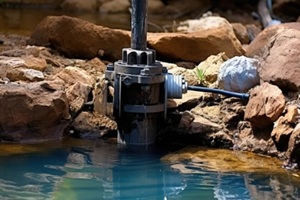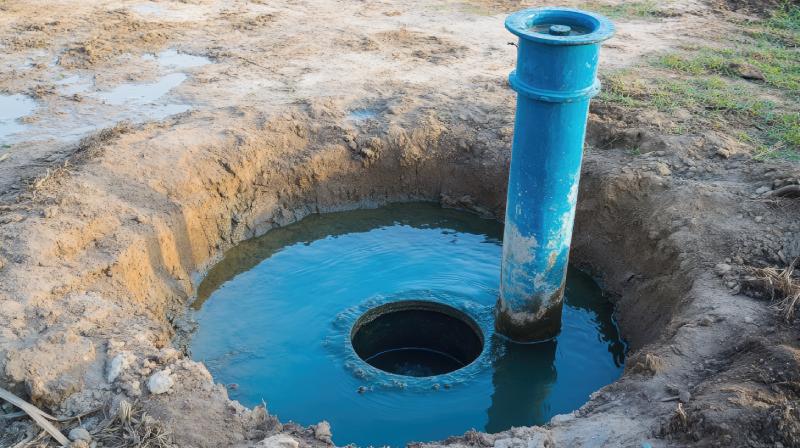
If your home has a sudden drop in water pressure, the faucets spit air, or the pump seems to be running nonstop, you might be dealing with a submersible well pump issue. Unfortunately, if something goes wrong with these systems, you won’t always know right away because the pumps are tucked away.
However, with basic knowledge of how your system works and what common symptoms mean, you can often pinpoint the problem before calling in a professional. To help you figure out what’s going on, here’s a straightforward look at how to troubleshoot a submersible well pump safely and effectively.
Recognizing the Symptoms of a Failing Pump
One of the first signs of trouble with a submersible well pump is something called “short cycling,” which happens when your pump turns on, pressurizes the tank, and then shuts off almost immediately, only to turn back on again moments later. The added strain is more than the motor was designed to handle and can cause it to fail early.
A pump in this cycle may sound like it’s working harder than usual, and your water pressure may fluctuate rapidly. Short cycling often results from an issue with the pressure tank, such as being waterlogged or undersized for the pump’s capacity.
In a healthy system, your pump should run long enough to cool properly and maintain consistent pressure. If it runs for less than a minute each time, then the system may be improperly sized.
Pressure tanks have a component known as the “drawdown,” which refers to the volume of water they hold between pump cycles. If the tank’s drawdown is too low, the pump turns on more frequently than it should.
If you’re using a 10-gallon-per-minute pump with a ½ HP motor, plan on a pressure tank that can handle at least 10 gallons of drawdown. A standard 20-gallon tank only offers 4 to 6 gallons of drawdown, which means it’s likely too small and could overwork the pump.
Checking the Pressure Tank and Valves
Start by locating the air valve, usually found near the top of the tank, and use a tire gauge to check the pressure once the system has been fully drained. That reading should be about 2 PSI below the “on” setting of your pressure switch.
When the pump starts at 30 PSI, the tank should be pre-charged to just under that, usually 28 PSI. If the pressure is lower, use an air compressor to pump it up. If water comes out of the valve when checked, the tank is likely waterlogged and needs to be replaced.

Next, examine the system’s check valve, which keeps water from draining back into the well and triggering unnecessary pump cycles. Shut off the water past the pressure tank and watch the gauge.
If pressure drops after 10 minutes, the check valve may be stuck open or leaking, which forces the pump to restart frequently. Replacing a bad check valve can often extend the life of your pump and stabilize the system’s pressure.
Diagnosing the Health of Your Submersible Well Pump
Once the mechanical parts have been checked, look at the electrical side of the system. Submersible well pumps typically run on 220 or 230 volts.
Before handling anything, make sure to cut power at the breaker and switch. Use a multimeter to confirm the voltage at the pressure switch; each leg should read around 115 volts if the system is correctly powered. If one leg is off, a fuse or wiring issue upstream may be present.
After verifying power, disconnect all of the pump wires and measure resistance between the leads. The manufacturer’s label, typically found near the inlet or inside the control box, will list the correct resistance range.
For instance, a reading between 4.2 to 5.2 ohms is standard for some models. A value outside that range could mean a shorted motor or a broken wire. A meter reading of “OL” indicates a fractured wire. Less resistance than expected suggests a short inside the motor.
Testing how much current the pump draws during startup and operation is also useful. Use the 10-amp setting on your multimeter and place it in series with one leg of the circuit.
A normal startup might spike to 15 or 20 amps and then settle at a lower running current. If the pump stays at a high amperage, that suggests it’s working too hard, likely due to a clog, a bad impeller, or other mechanical resistance.
When to Call in the Experts

Troubleshooting a submersible well pump can help you better understand your system and potentially spot issues early. The process often involves electricity, handling pressurized components, and working with equipment that’s buried deep underground. For many homeowners, the risk of misdiagnosis or damage isn’t worth the gamble.
At Tri-County Pump Service, we bring over 30 years of hands-on experience with well pump systems, pressure tanks, water treatment, and more. As a family-owned company serving Maryland, Virginia, and West Virginia since 1991, we’re committed to providing dependable, no-pressure solutions and lasting relationships built on trust and education.
If your pump is short cycling, your water pressure is inconsistent, or you’re simply not sure what’s going on, don’t guess; let us take a look and give you a clear path forward. Call us at 1-(301)-432-0330, schedule a visit online, or reach out through our contact form to get the answers and support you need.



